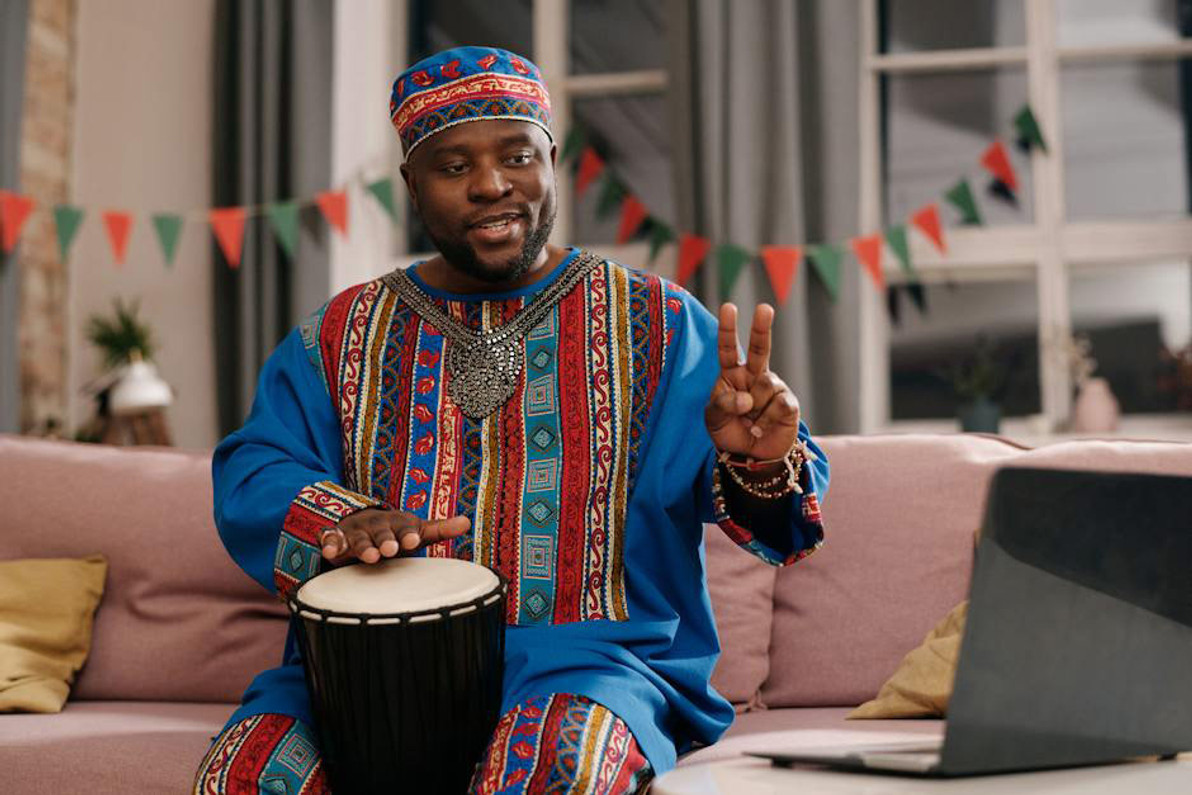Exploring the World Through Djembe Patterns: A Percussion Journey
Introduction to Djembe Patterns
The djembe is a West African drum with a goblet shape and a skin head. Djembe patterns are rhythmic sequences produced by striking different parts of the drumhead. Each pattern carries a unique cultural significance, and mastering them is essential for understanding the African percussion tradition. Some essential patterns to explore are the bass, tone, and slap. The bass produces a deep, resonant sound, while the tone creates a mid-range pitch, and the slap generates a sharp, high-pitched sound. These patterns, when combined, form complex rhythms that have been passed down through generations.

History and Cultural Significance of Djembe
Djembe is a West African drum that has a rich history and cultural significance. Originating from the Mande people of Mali, the djembe was traditionally used in ceremonies, rituals, and social gatherings. It was also seen as a symbol of unity and communication within the community. The drum's unique sound and rhythmic patterns have transcended geographical boundaries, making it a popular instrument in music and dance around the world. Today, the djembe continues to be a symbol of cultural heritage and a means of connecting people through its powerful beats.
The Role of Djembe Patterns in Traditional Music
Djembe patterns play a crucial role in traditional music, serving as the rhythmic backbone of many cultural performances. Each pattern has its own unique significance, with some representing specific dances, ceremonies, or even storytelling. The variations in patterns allow for a rich and diverse musical experience, making the Djembe a versatile and essential instrument in traditional music across the globe.
Exploring Advanced Djembe Rhythms
To take your djembe playing to the next level, exploring advanced rhythms can open up a whole new world of possibilities. Mastering complex patterns can add depth and intricacy to your performances, allowing you to create more captivating and dynamic music. By incorporating advanced djembe rhythms into your repertoire, you can elevate your playing and bring a new level of excitement and energy to your percussion journey.
Techniques for Learning Djembe Patterns
To learn Djembe patterns, it is important to focus on the basic techniques. These may include mastering the traditional hand positions, using proper posture and grip, and developing a strong sense of rhythm. Additionally, it is beneficial to practice regularly and seek guidance from experienced players to enhance your skills. With dedication and persistence, you can cultivate a deep understanding of Djembe patterns and embark on an enriching percussion journey.
Djembe Patterns in Contemporary Music
Contemporary music often incorporates diverse rhythms from different cultures, including the intricate patterns of the Djembe. One can find Djembe patterns commonly used in genres such as jazz, world music, and fusion. These patterns add a unique, dynamic layer to the music, creating a rich and multi-textured sound. Keep exploring, and you may be surprised by the ways these traditional rhythms are woven into modern musical compositions.
Health and Well-being Benefits of Playing Djembe
Playing the djembe can be beneficial for your health and well-being. Some of the benefits include improved hand-eye coordination, reduced stress, and strengthened arm muscles. The rhythmic patterns of the djembe can also promote a sense of community and connection with others, enhancing overall well-being.
Joining the Global Djembe Community
Interested in connecting with a vibrant community of Djembe enthusiasts from around the world? Embrace the opportunity to learn and share rhythms, techniques, and experiences with fellow percussionists. Engaging with the global Djembe community can provide inspiration, facilitate cultural exchange, and foster a sense of unity through music. Whether you're a beginner or an experienced player, uniting with the global Djembe community offers a platform to broaden your musical horizons and form meaningful connections.
Recent Posts
-
X8 Drums Play-Along Backing Tracks
The new X8 Play-Along Series is being produced for our musician friends wanting a fresh way to work …9th Feb 2025 -
What is the Best Size Djembe for Beginners?
If you're new to the world of percussion and interested in learning the djembe, you're in for a t …16th Jul 2024 -
The Benefits of Becoming a Drumming Teacher: Transforming Passion into Profession
Why become a drumming teacher? Becoming a drumming teacher is an excellent way to share your pas …22nd May 2024




